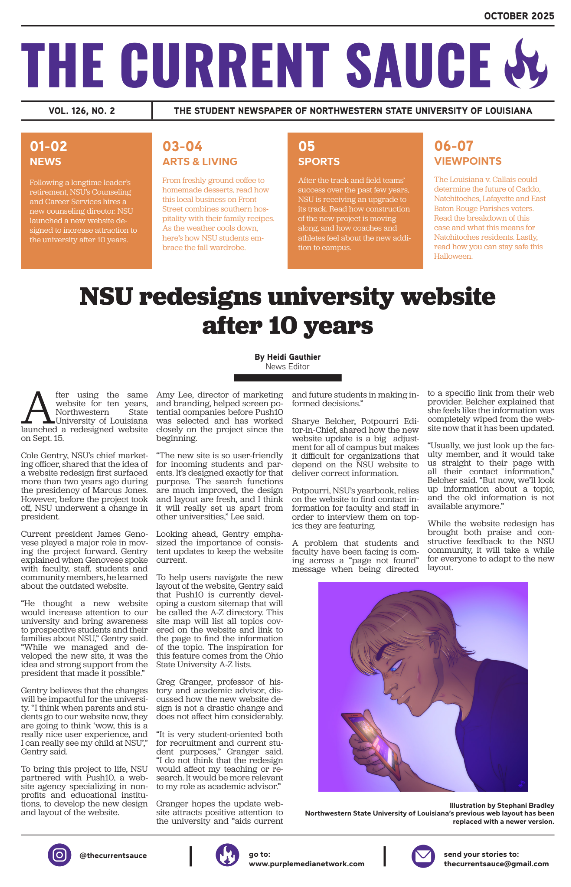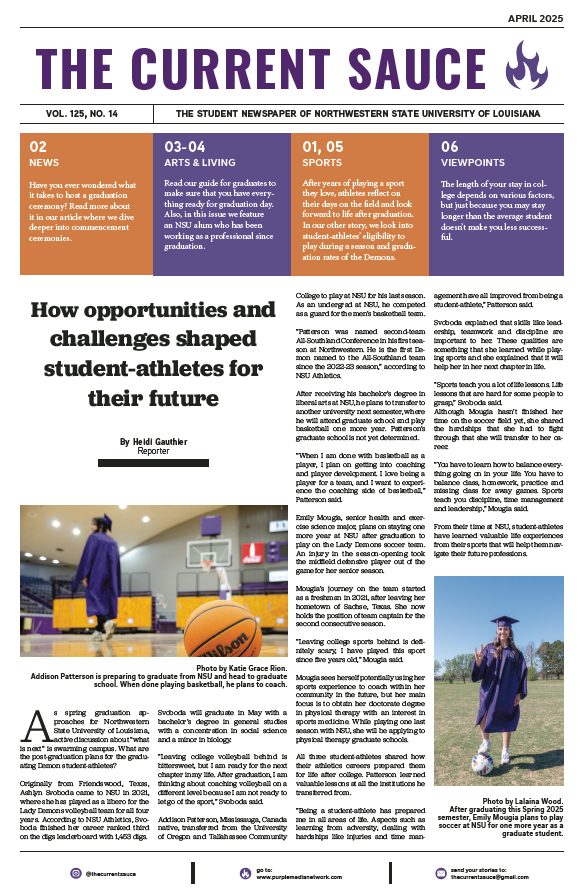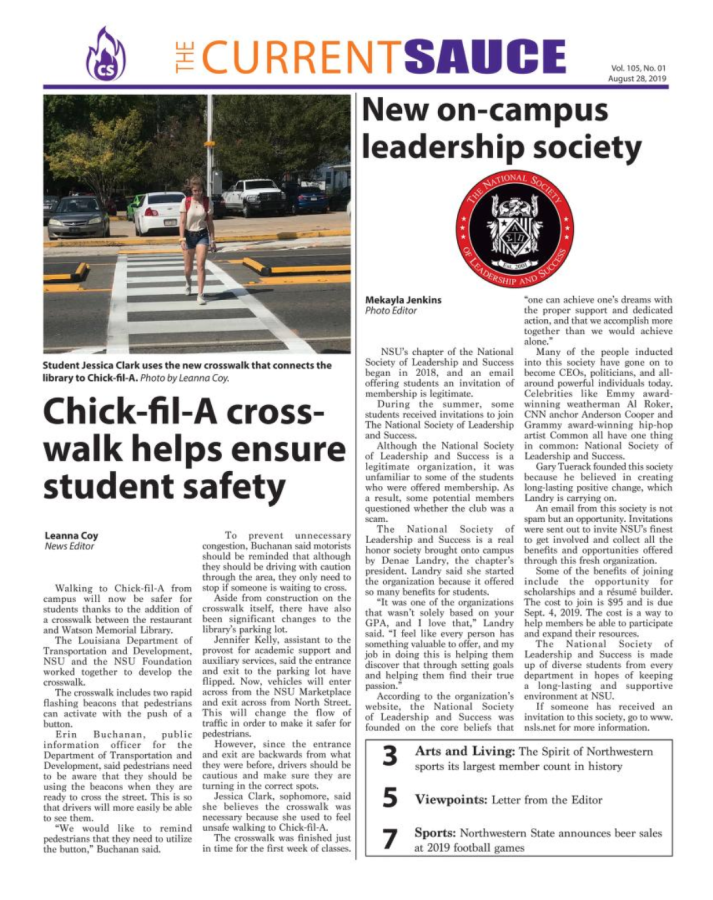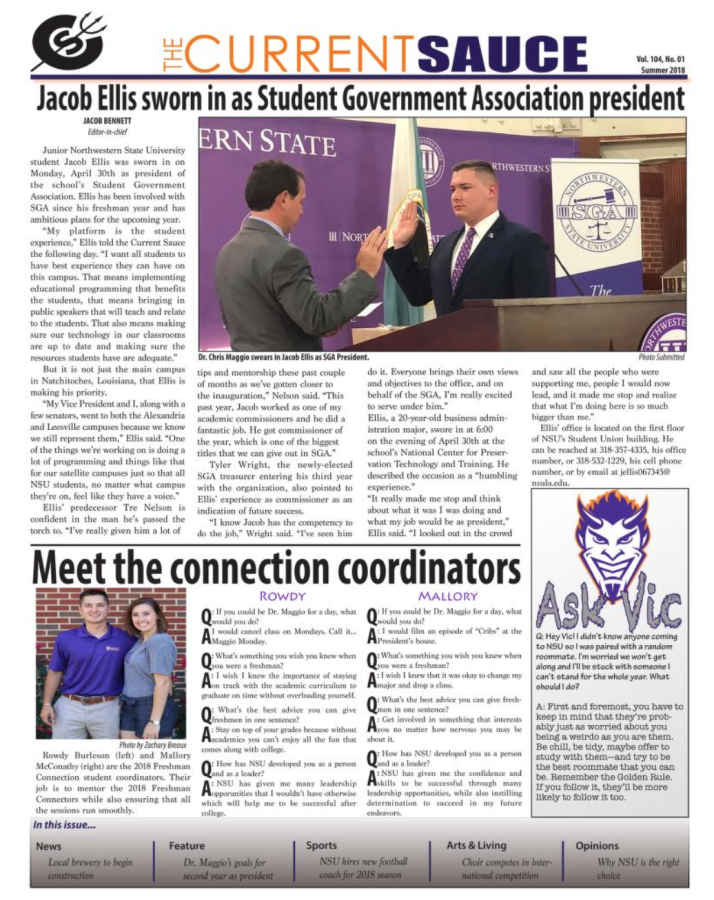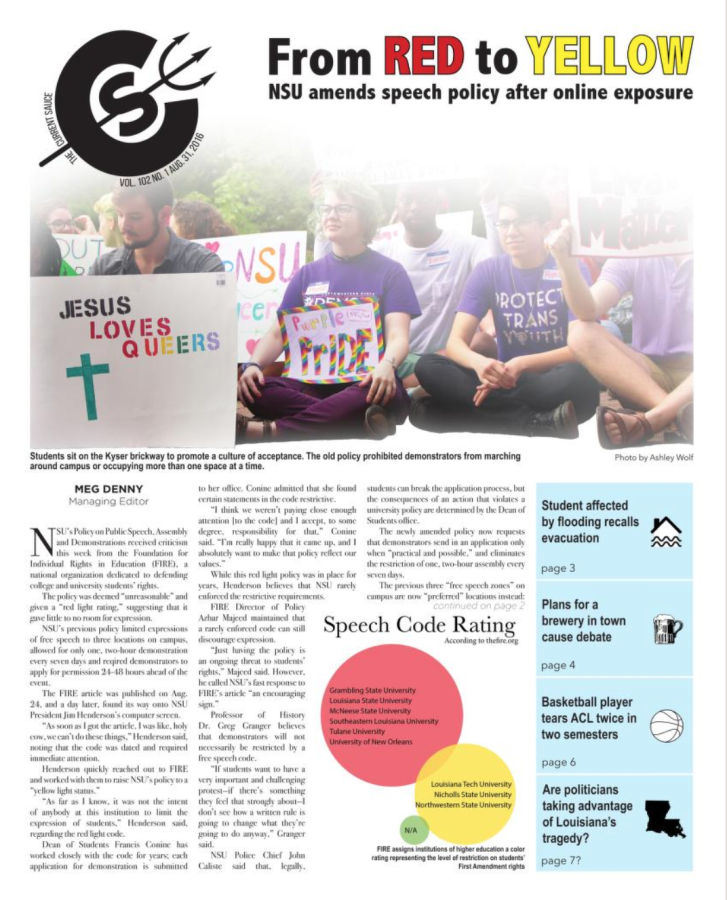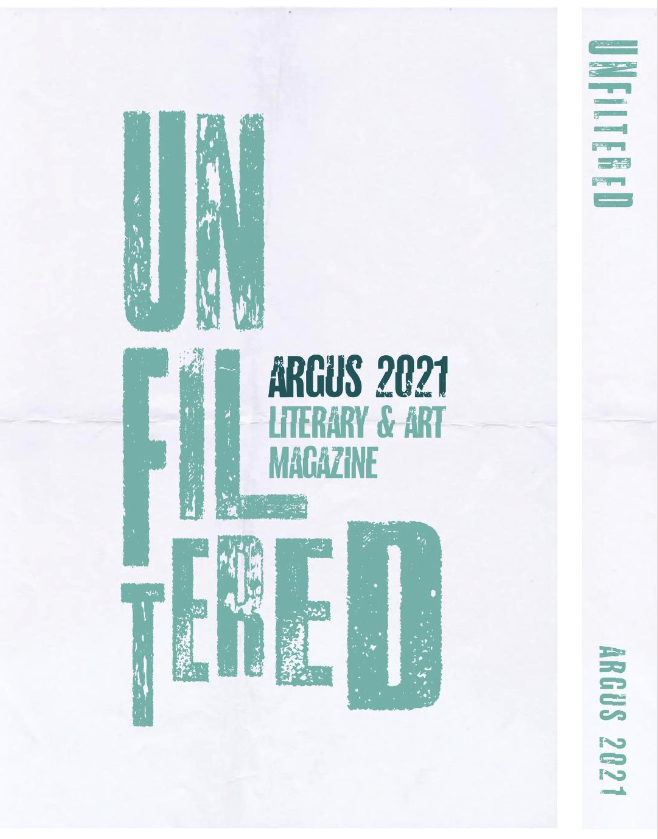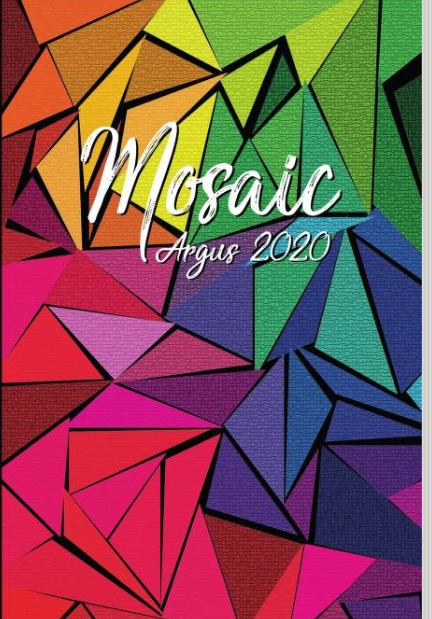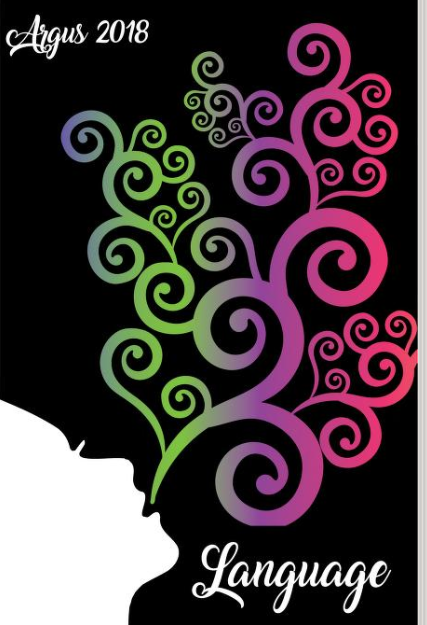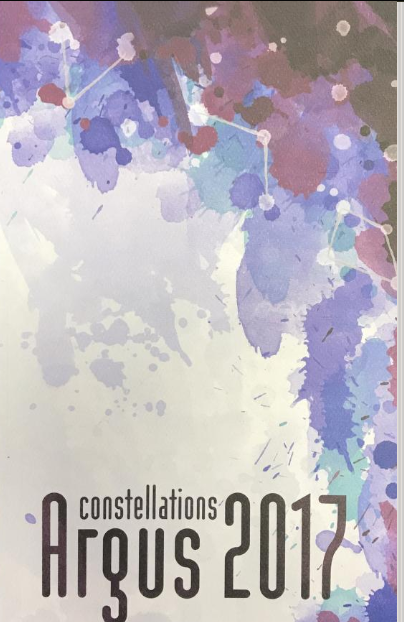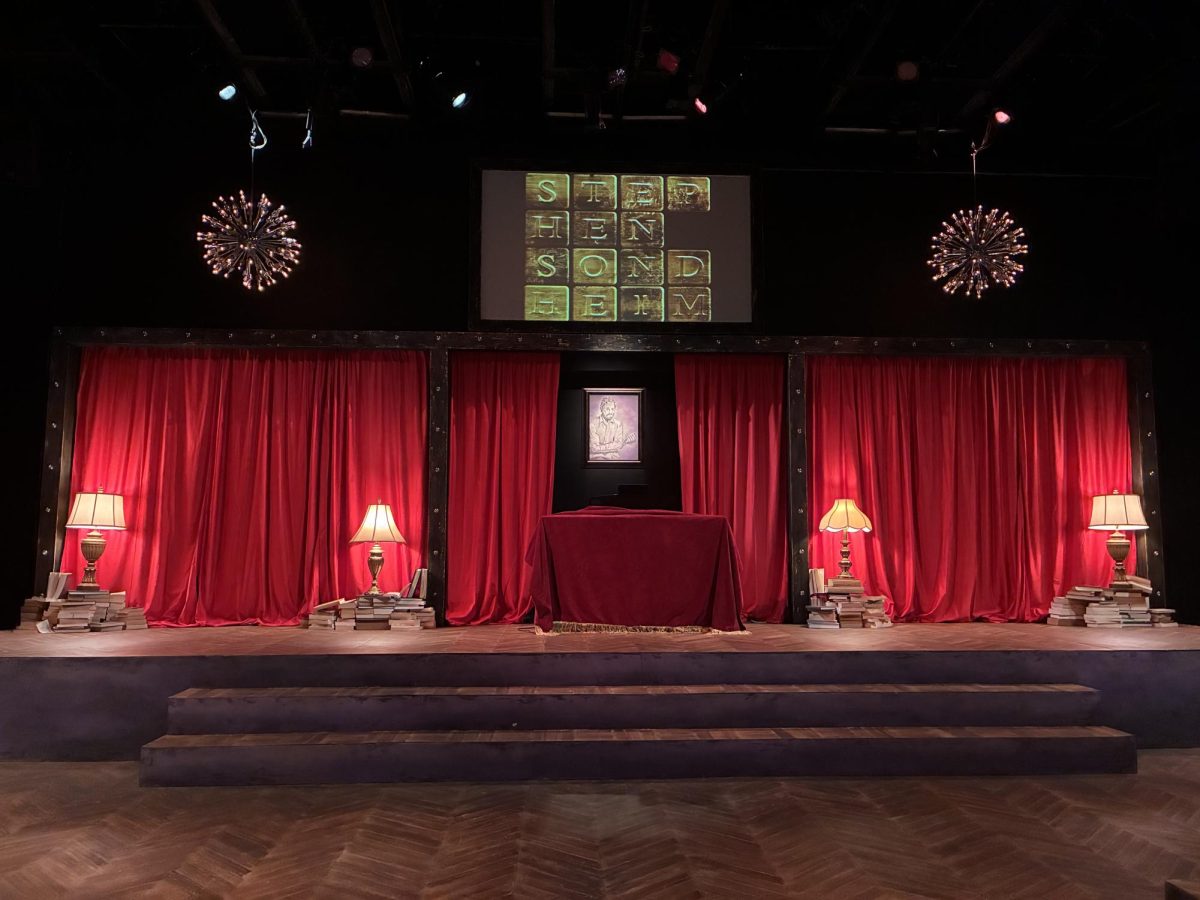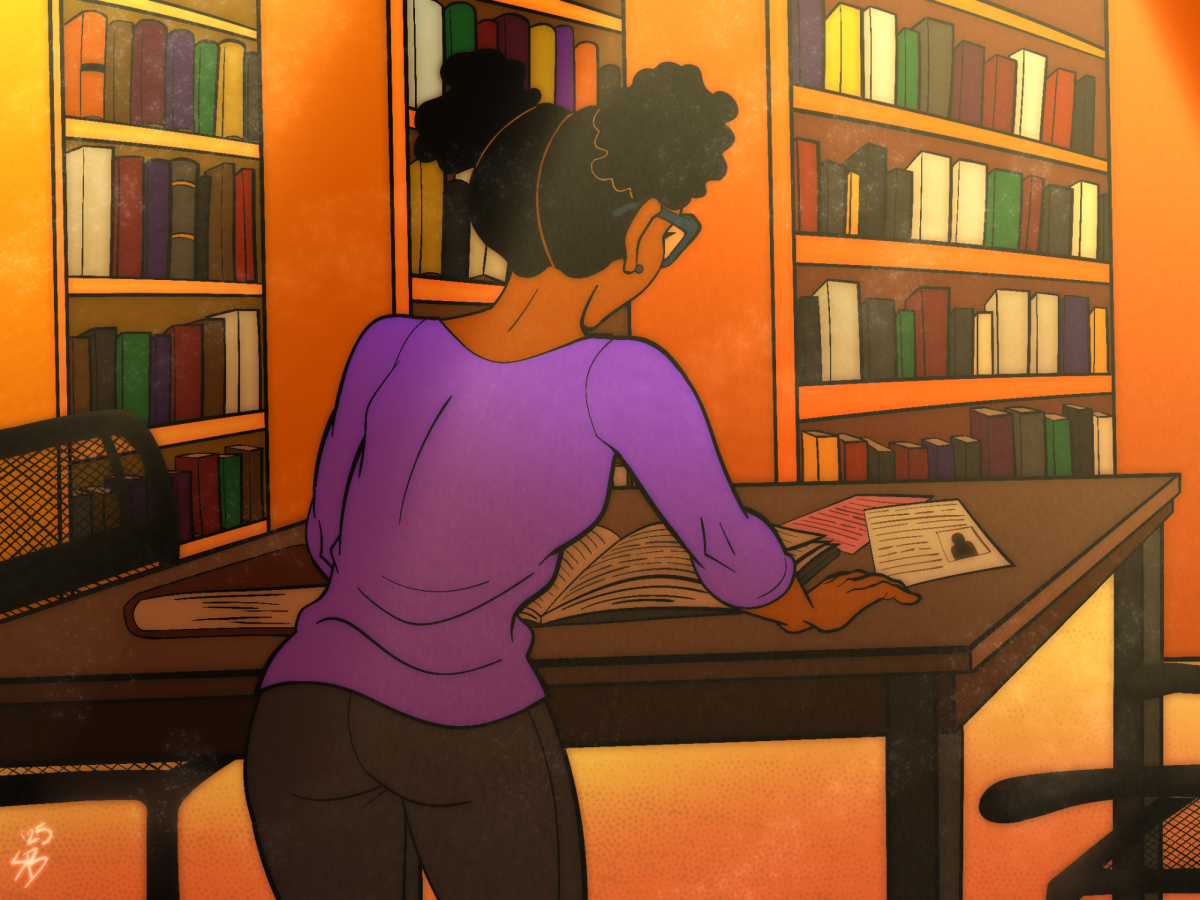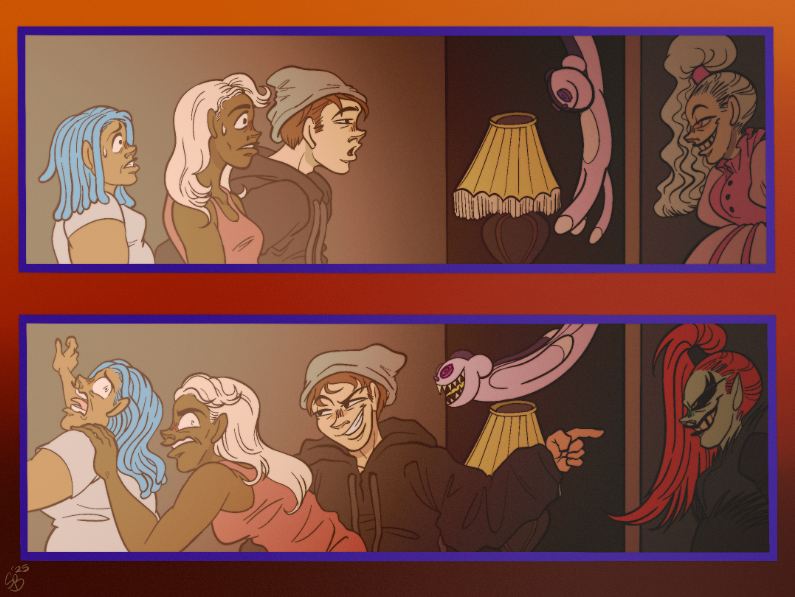When it comes to American musical theater, Stephen Sondheim has left his legendary mark. His works—”Company,” “Sweeney Todd: The Demon Barber of Fleet Street,” “Into the Woods” and “West Side Story”—have defined and reshaped the modern Broadway scene. But what happens when an artist’s own story becomes the show?
That’s exactly the question answered by “Sondheim on Sondheim,” a unique theatrical production performed by Northwestern State University of Louisiana on Sept. 24 through Sept. 27 that blended music, history and the personal voice of one of the most influential composers and lyricists in Broadway history.
The performances were made possible by Sean Bartley, assistant professor of theatre and the show’s director, and Sloane Artis, director of musical theatre and the music director. The two went the extra mile and composed their own version of the musical for NSU’s stage.
Upon walking into Theatre West at NSU, it was clear this would be a musical unlike any other. The sophisticated, moody vibe of the room was alluring and the stage was close to the seats, making for an intimate and charming setting. The room was dim except for four separate lamps, each resting on their own pile of books.
The lights faded, and the spotlight was put on the remarkable pianist, Candace Paul. Paul walked onto the stage and sat at her piano, where she carried the musical all the way through.
Originally directed by James Lapine, one of Sondheim’s closest collaborators, “Sondheim on Sondheim” is more than just a collection of songs—it serves as a multimedia biography. Using video clips, recorded interviews and rare behind-the-scenes footage, the show weaves Sondheim’s reflections together with live performances of his songs, making a perfect patchwork of his legacy.
On a screen above the stage, Sondheim himself speaks directly to the audience, sharing stories about his childhood, his struggles, his inspirations and even his failures. Sondheim has no filter—he is at times blunt, full of wit and occasionally vulnerable. This performance is not just about the music, but the man behind it, and the audience is able to both hear the songs and learn why they exist.
The actors demonstrated raw emotion throughout the entire production. ShayAnna Beatty, J. Cole Becton, Dylan Freeman, Harleigh Miller, Preston Rasco, Mia Rodriguez, Jay Trosclair and Malachi White all portrayed Sondheim at some point in his life or some product he created. With incredible props, fierce choreography and strong voices, they connected Sondheim to the audience in a way that was personal and emotional.
The detailed, satirical use of props took the musical to the next level. When featuring Sondheim’s “The Gun Song,” the actors each carried their own weapon, using mannerisms that reflected the song’s morals. As the actors harnessed dark humor to comment on the deeper societal issues, the screen above played a slideshow of important people in history who have died at the hands of gun violence. A satirical commentary on American culture, the song was nothing short of haunting.
“Sondheim on Sondheim” is memorable because it bridges the gap between artist and audience. It doesn’t just celebrate Sondheim’s work, but humanizes him as well.
You leave the theater reminiscing about what your favorite song was, but also wiping your watery eyes and thinking about the stark commentary entangled with the music. Nothing, though, resonates as much as the newfound understanding of the long process of making art and what it means to devote a life to storytelling through song.

